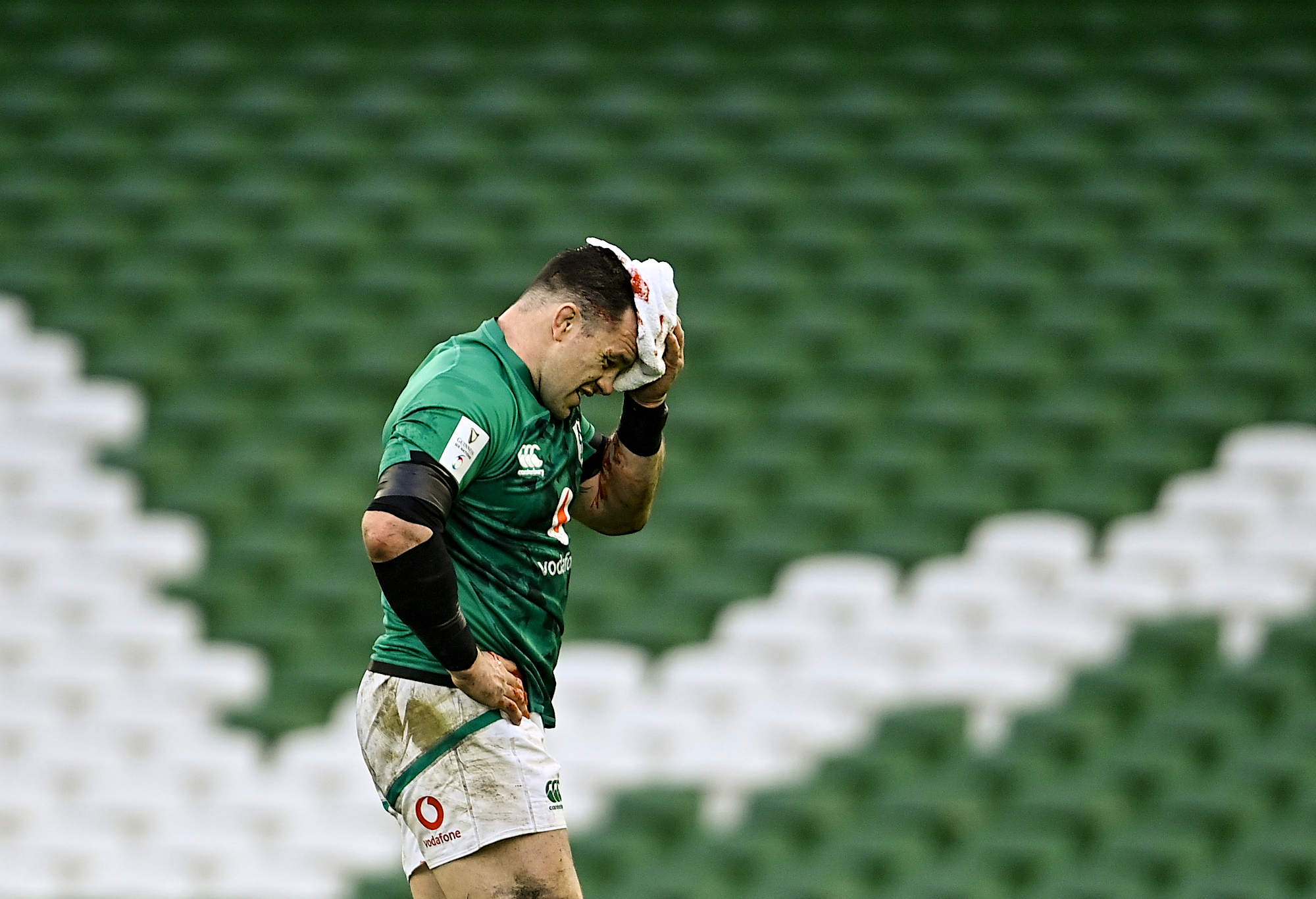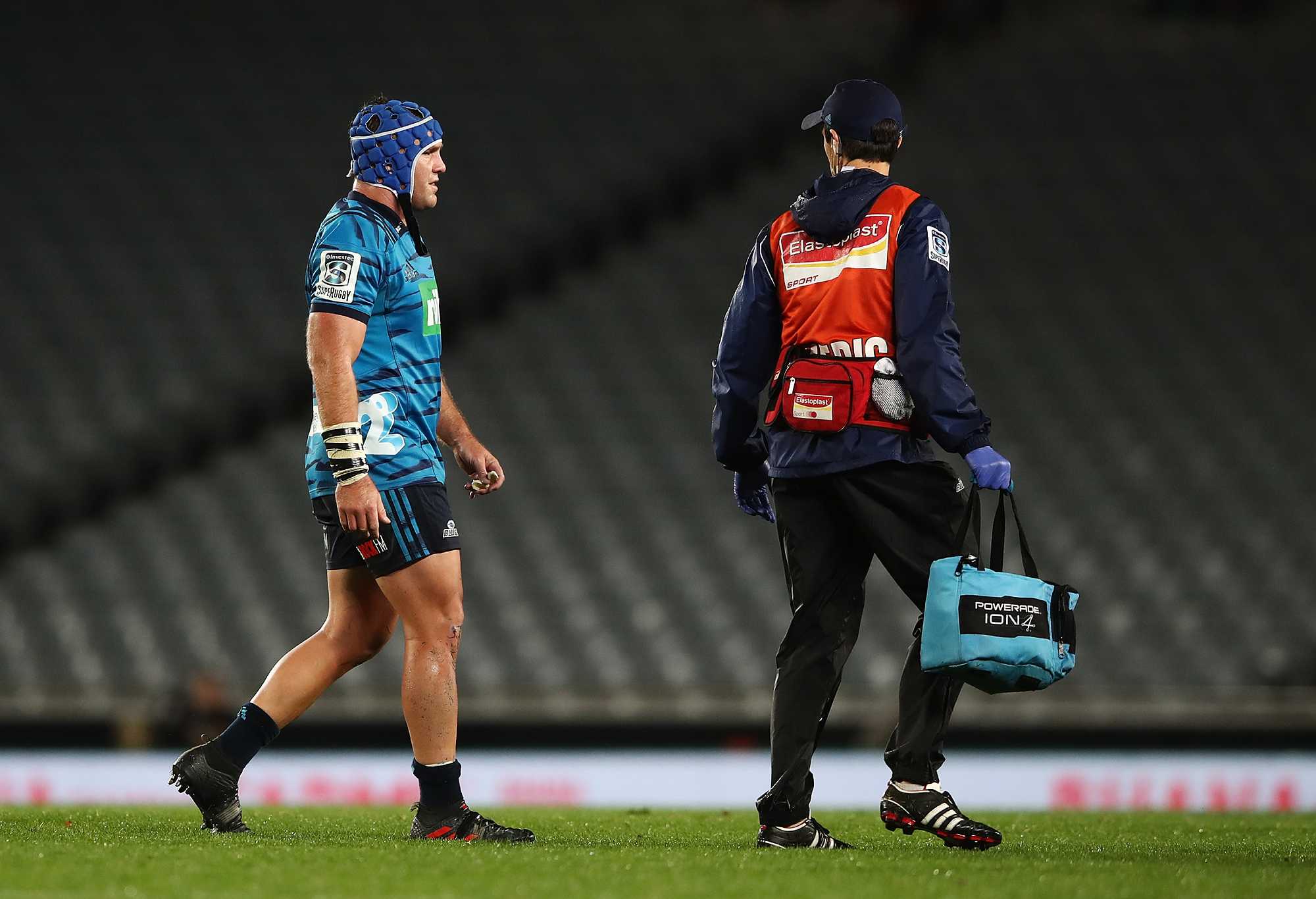It’s the issue that’s never going away. What can rugby do about concussion?
Released last week, provisional findings from a University of Auckland research project found the risk onset for Alzheimer’s Disease was 42% higher for rugby players than the general population, and 17% higher for any neurogenerative disease.
Will players of the future – and their parents – feel confident that rugby is safe enough for them to continue playing? Will administrators instigate and oversee genuine improvements and advancements that lead to better safety outcomes, and do so with appropriate haste?
Compared to Australia’s other contact football codes, rugby is unique in that overall jurisdiction and administration of the sport resides in Dublin. Setting aside occasional law variation trials, it is a global game played in the same way, with the same behaviours, laws and sanctions applying in all locations.
That’s both a blessing and a curse for Rugby Australia. It doesn’t have to bother itself with research and policy-making, just ensure compliance with whatever World Rugby sends its way.
But what might be a good thing for a cash-strapped organisation also means there is little chance of Australia adopting a leadership position when it comes to head injury. As in so many things rugby, Australia is a follower, not a leader.
Two matters dominate the landscape; a group litigation currently before the London High Court, involving up to 300 ex-players, and a drive by World Rugby to lower tackle heights.
The former is at a messy stage around disclosure and whether the two sides can agree to have the case heard as a group claim, comprising a representative sample of 45 players, or as individual cases. At this stage, a full hearing before the end of 2024 seems unlikely.
For its part, World Rugby recently issued a joint statement in conjunction with the Welsh Rugby Union, stating; “We would want players involved to know that we listen, we care and continue to champion player welfare as the sport’s number one priority. Players and parents can have confidence that rugby is as safe as a contact sport can be. Rugby will always be led by the latest science when taking any action on player welfare.”
Fine words, but as the COVID years showed, politicians and administrators who tout “we are guided by the science” aren’t always as forthcoming in explaining why or how one man’s science is worth more than another man’s science.
One constant in the concussion debate is how sports, including rugby, have hidden behind the ‘science’ of the Concussion in Sport Group; a body previously headed by now-disgraced Australian Dr Paul McCrory, and overwhelmingly populated by academics and medical professionals on the payroll of various self-interested sports.
An updated statement from the CISG in 2023 stubbornly refused to acknowledge a causal relationship between contact sports participation and CTE; directly at odds with independent organisations like the National Institute of Health (USA), Centre for Disease Control and Prevention (USA), and the National Health Service (UK), who all concluded that CTE is caused by repeated traumatic brain injuries.

(Photo By Ramsey Cardy/Sportsfile via Getty Images)
In November 2022, a World Rugby conference in Amsterdam included a session on brain health, where a number of handpicked speakers attacked the validity of the findings of those organisations, and the work of prominent experts in the field.
One danger with World Rugby ‘choosing sides’ like this is that it risks locking itself into a prescribed course of action; one that eschews wider, vigorous debate. It ensures, to the detriment of players, that progress is grindingly slow.
Also problematic – and less than scientific – is the continued use of match officials as proxy agents of change. The intent – to lessen the incidence of head injuries and concussions – can’t be argued with, but where is the conclusive evidence that a process which involves sending some players off for what is sometimes incidental or accidental contact, and others not, makes the game safer?
As if one TMO wasn’t enough, the recent World Cup saw the addition of more backroom officials, employed to scour through vision, a few seconds behind play, to identify purveyors of foul play. Once they had their man, match officials then curiously seemed to switch sides, trying to find mitigating factors to apply against the prescribed foul play sanction.
It remains to be seen whether World Rugby will realise the futility of torturing themselves at the margins trying to decipher the fine differences between Sam Cane’s and Siya Kolisi’s actions, heavily influencing the outcome of a World Cup final in the process, and think instead in terms of what made those instances broadly similar.

David Porecki receives medical attention. (Photo By David Fitzgerald/Sportsfile via Getty Images)
Once that mind shift is made, rugby will be able to reserve the heaviest sanctions for true cases of deliberate or extremely reckless foul play, and focus resources and energy into changing behaviour at all levels of the game through a cohesive strategy that leans more heavily into education and coaching.
In the meantime, February will see the Australian roll-out of a two-year trial in community and junior rugby where the legal tackle height will be lowered to the ball carrier’s sternum and below. This is undoubtedly positive, albeit the measure comes six long years after data from previous trials conducted in France, England, New Zealand, South Africa, Ireland, Wales and Scotland showed a reduction in concussion instances of up to 30%.
Less convincing is World Rugby’s much-hyped introduction of ‘instrumented mouthguards’, at all levels of the professional game. The result of a Euro 2 million investment, ‘smart’ mouthguards provide in-game alerts to pitch-side doctors, to enable them to pick up players who have experienced a high level of acceleration as a result of contact, who have otherwise not been visually identified for head injury assessment (HIA).
While this ticks the box for ‘action’, some concussion experts are less convinced. Melbourne neuroscientist, and prominent advocate in the concussion and CTE space, Professor Alan Pearce, points to the NFL, which is now able to collect data from helmet impact and correlate this to CTE.
“This mouthguard benefit falls far short of this, is far less precise, and does little more than create a theatre of care. It doesn’t take into account individual player history and thresholds, and other variables such as angle and force,” Pearce told The Roar.
“The only real benefit is that we will get more HIA’s performed than via observation only. But then again, we know that the SCAT5 pitch-side test, or HIA, is flawed to begin with,” he added.
Like other sports, rugby has struggled to keep up with developments around understanding the distinction between CTE resulting from smaller, sub-concussive hits, and concussions arising from high-impact collisions.

Blues’ James Parsons walks off with concussion. (Photo by Hannah Peters/Getty Images)
To that end, guidelines around the amount of full contact training for professional players were introduced last year, and while Australia’s rugby franchises indicate they are compliant, adherence is largely self-regulated.
CTE is still only diagnosable post-mortem, although recent advances have enabled researchers to diagnose instances of ‘probable CTE’. There is mounting evidence that suggests that the incidence of sub-concussive hits to young brains that are not yet fully formed, is a leading indicator for CTE. Further, data from the Australian Brain Bank so far indicates better outcomes for players who started their careers at an older age.
With that in mind, and so much focus on the professional game, how much is being missed, in the areas where it really counts?
During the 2023 senate committee hearings on Concussion in Sport, nearly all of Australia’s central professional sports administrations admitted to having little or no idea as to how consistently head injury processes were being adhered to in the community. Most had no data around rates of compliance and rates of injury.
With this lack of accountability laid bare, an opportunity exists for rugby to take a positive lead, to highlight how their initiative and commitment to do more to ensure the safety of their junior and amateur participants can be a genuine differentiator and positive selling point to parents, when compared to other sports such as rugby league and AFL.
There are plenty of potential partners for Rugby Australia to align with, if it chooses. For example, the Concussion Legacy Foundation, which has a branch in Australia, is a strident advocate for the abolition of contact sport for children before the age of 14.
Last week the Australian Institute of Sport announced a suite of more robust protocols for community and junior sport, including a recommendation for a 21-day minimum stand-down period until the resumption of competitive sport, following a concussion.
Those proposed changes have been endorsed by a wide range of Australian sporting bodies, including athletics, cycling, hockey and touch football, but not by any of the main football codes, including rugby.
One of the anticipated outcomes of the senate committee hearings was that Australian sports would ultimately be required to provide participants with a ‘concussion passport’, which they would carry with them from junior sport through to adulthood, wherever and whoever they end up playing with and for.
Containing historical information, the ‘passport’ would enable players, their parents, clubs and club doctors to make better-informed decisions around individual players and their treatment and recovery after suffering a head injury or concussion.
The concussion space is punctuated by how slowly everything moves. There are always calls for more research, time for trials and to test new technology, and to consider potential impacts on the way the sport is played. One benefit of the passport proposal is that its implementation isn’t impeded by any of that.
With the senate committee having promised much, but ultimately fizzling out into a few vague, watery recommendations with no passport and no accountability mechanisms attached, sports like rugby have a choice.
They can view those findings as a ‘bullet dodged’ and a free pass. Or, they can seize the opportunity to take the best ideas, implement them, and become leaders in this critically important space.
The many intensely sad, personal accounts of ex-players suffering in their younger, middle and later ages are impactful and important. But there is a danger of these becoming so commonplace that they tend to become over-familiar and wash over the sporting landscape.
And where this leads to a disconnect on the part of administrators, there invariably follows a lack of accountability.
It is not enough for rugby in Australia – and globally – to smugly believe, ‘at least we’re nowhere near as bad as rugby league’.
Players, and the great game, deserve more decisive action.
Rugby Australia was contacted for comment.































































































